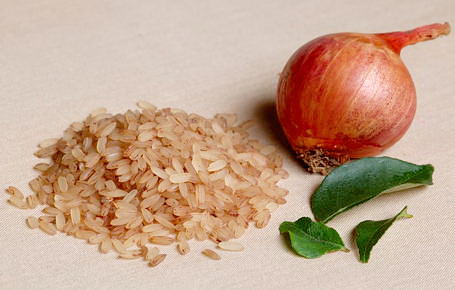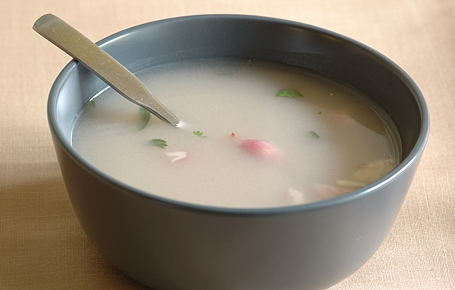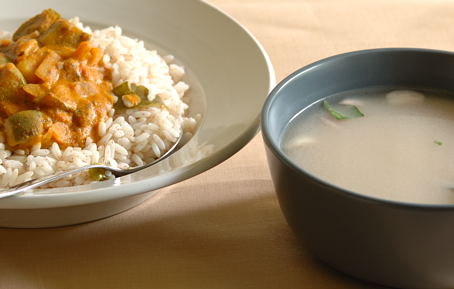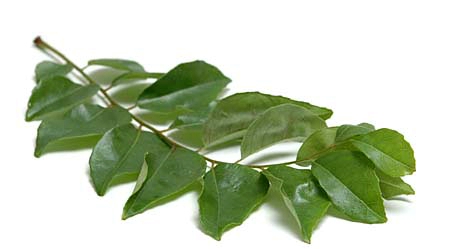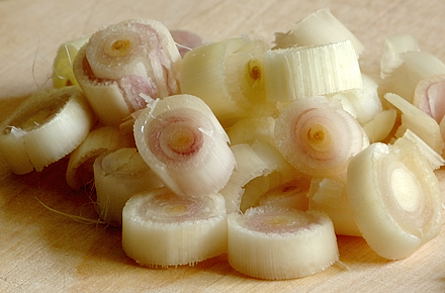
Sliced Rings of Lemon Grass
I have been cooking with lemon grass a lot lately. Thanks to the strong presence of fresh seasonal produce from Asia, I can buy almost all kinds of vibrant looking vegetables readily here in Seattle. That includes fresh curry leaves and also herbs like lemon grass etc.
Prepping the lemon grass for cooking is easy. For the supermarket variety, cut and remove upper two thirds of dried out green grass/stalk. Lower part, the white bulbous portion is what we want. Make a shallow cut lengthwise in the middle of bulbous portion and remove at least two fibrous, woodsy looking outer layers. That would reveal a pale pinkish-white, citrus smelling lemon grass root. Finely slice the root into thin rings or pound in a mortar to a coarse paste. The soothing, refreshing lemony aroma is what makes this herb so special to me and I have been adding it to tea, rasam, and sambar and also to flavor the rice, mainly in stir-fried rice recipes.
Stir-fried brown basmati rice from India with crisp tasting sugar snap peas and green beans, liberally flavored with lemon grass and curry leaves – this recipe has become the most frequently prepared rice in our home for the past few weeks. It is easy to put together, makes use of spring vegetables that snap, and filled with lots of flavor. Scrambled paneer, tofu or eggs adds the protein component and makes this a complete meal for us.
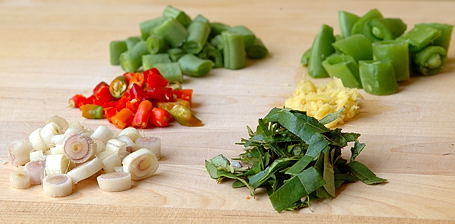
Lemon Grass, Curry Leaves, Ginger, Fresh Red Chilli, Green Beans and Sugar Snap Peas
Recipe:
Cook 2 cups of brown basmati in 4 cups of water to tender. Cool to room temperature. ( Brown basmati offers a certain chewiness and richness of flavor. Cold rice makes better fried rice.)
Meanwhile prep the ingredients.
Cut fresh green beans and tender sugar snap peapods – quarter cup each
Finely slice Lemon grass and curry leaves – about 3 tablespoons each
Finely chop fresh red chillies- about a tablespoon
Grate fresh ginger -1 tablespoon
Grate fresh coconut – 4 tablespoons
Heat a tablespoon of oil in a wide skillet on high heat. One by one add the ingredients listed above in the order mentioned and stir-fry few minutes each. Add the cooked rice. Sprinkle a pinch of sugar and a teaspoon of salt. If you want you can also add little bit of soy sauce and chilli sauce at this stage along with scrambled paneer/tofu/egg. Stir well for a minute or two. Finish by adding some lemon juice and serve. Fragrant fried rice would be ready.
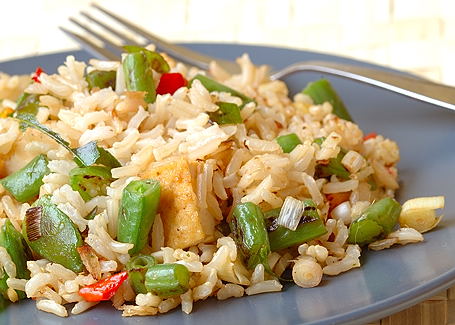
Fragrant Fried Rice with Lemon Grass and Curry Leaves
Recipe Notes:
Brown basmati avialable in most Indian grocery shops here in US.
I’ve purposely avoided adding onions/shallots, not to clash with lemon grass and curry leaves. This is a very adaptable recipe, experiment with different fresh vegetables like bell peppers, zucchini etc.

